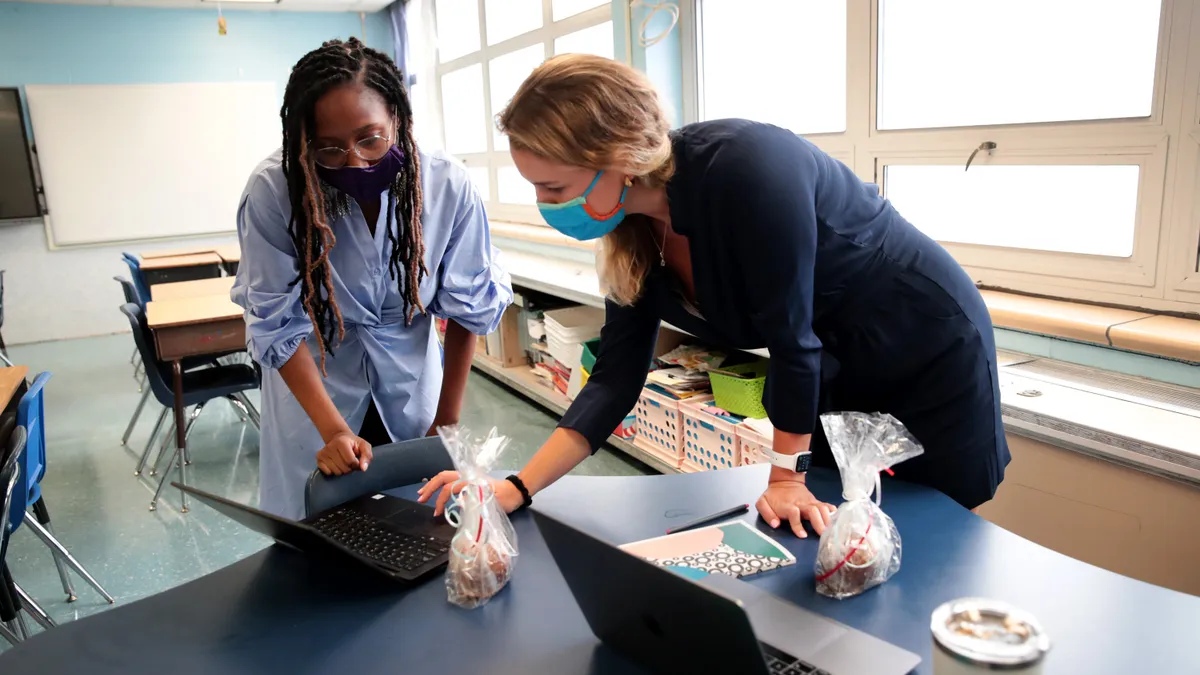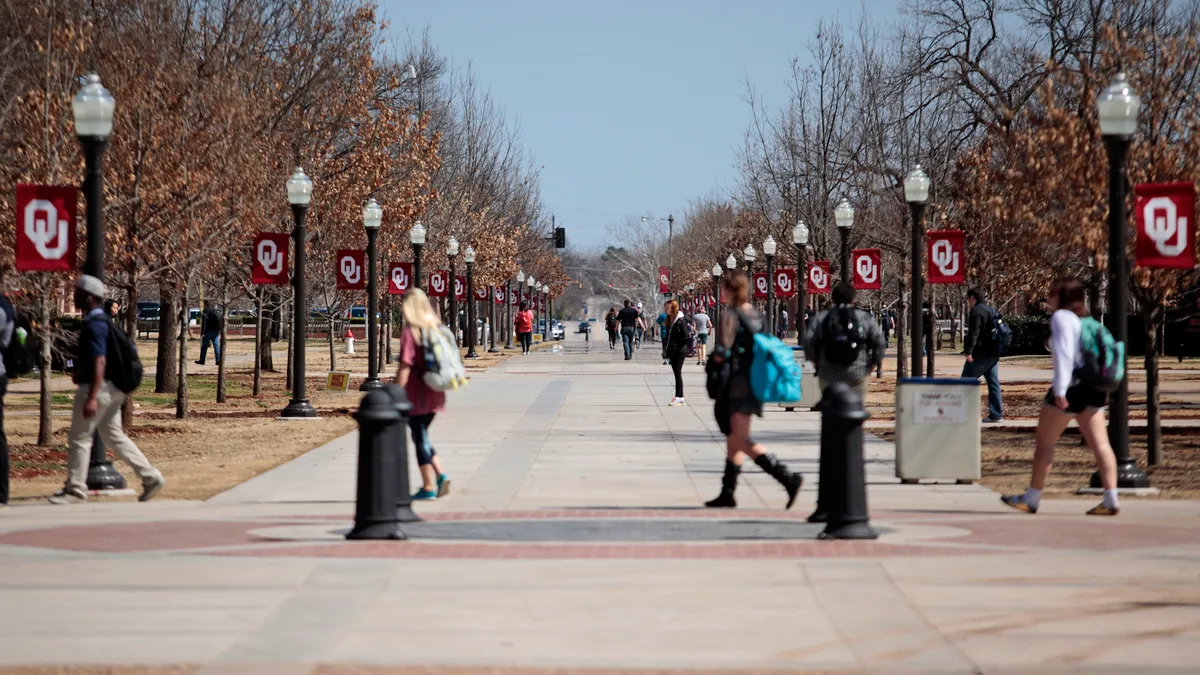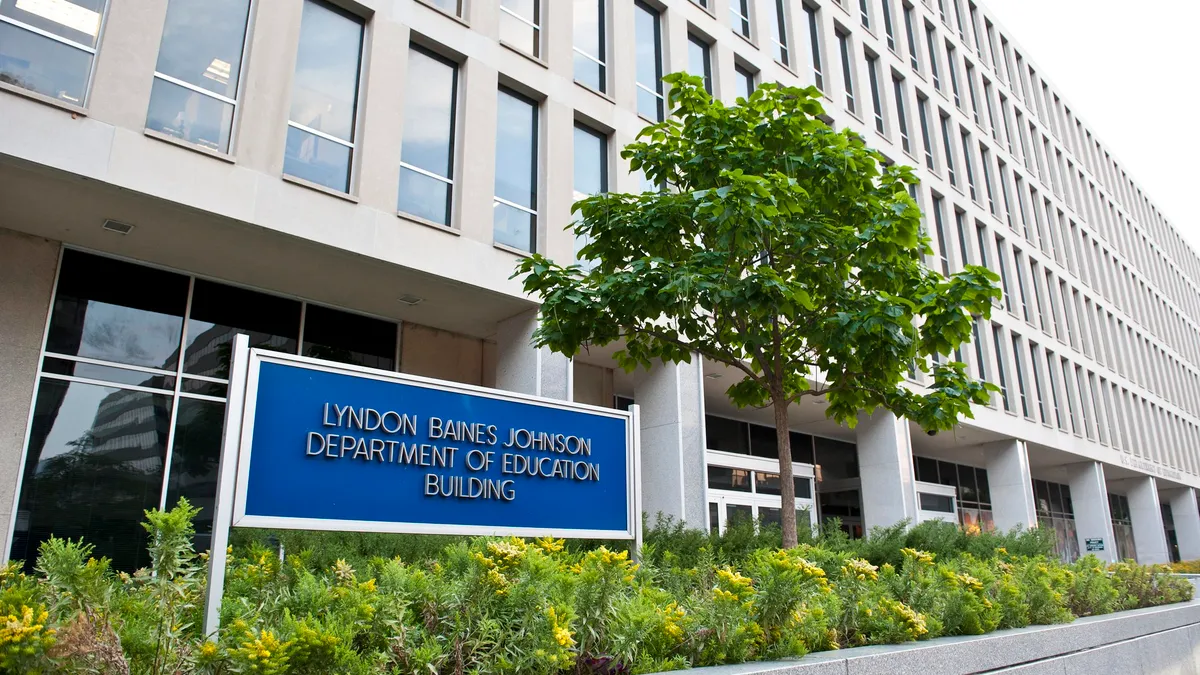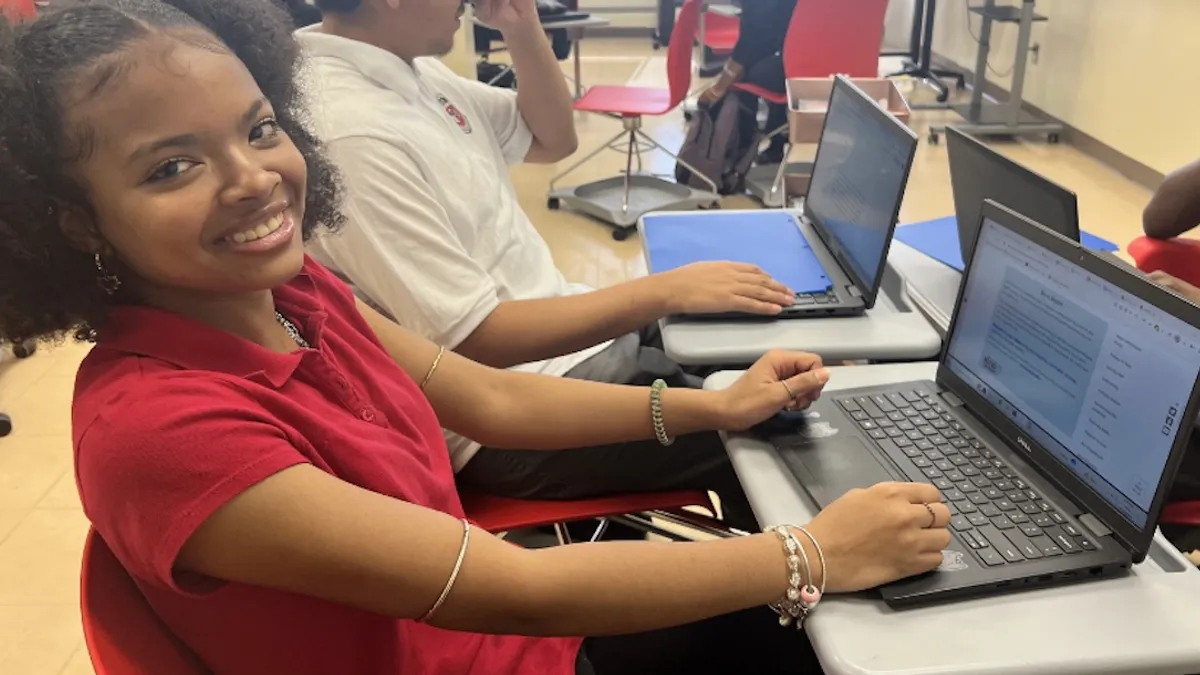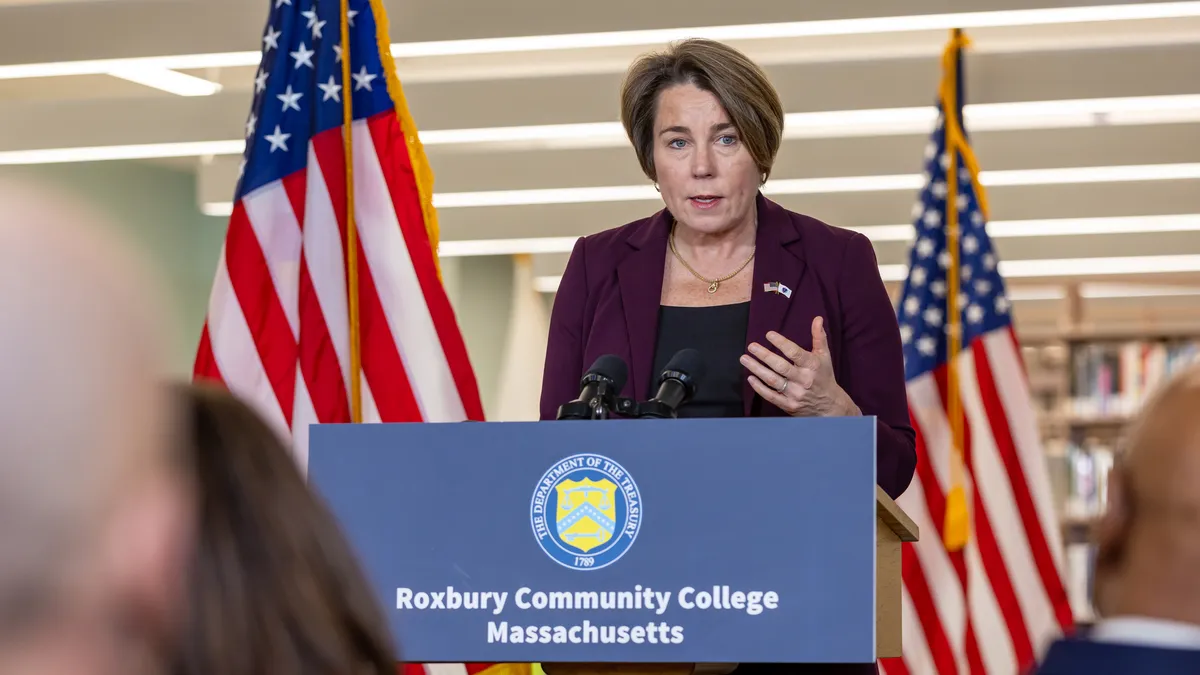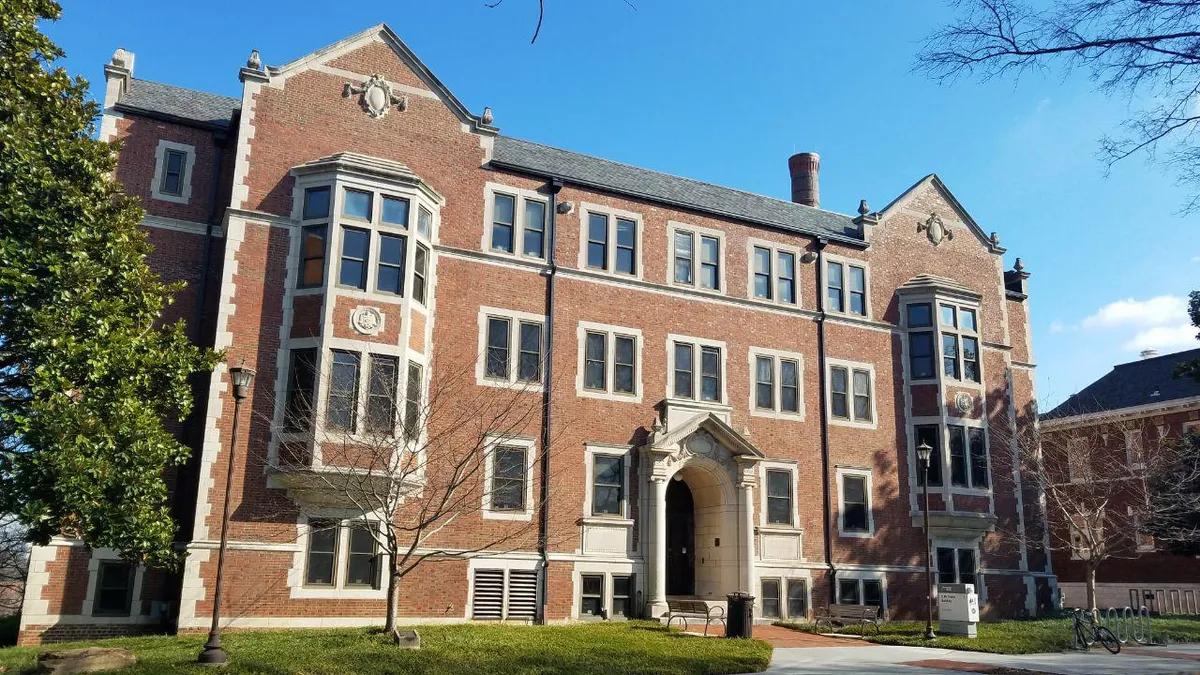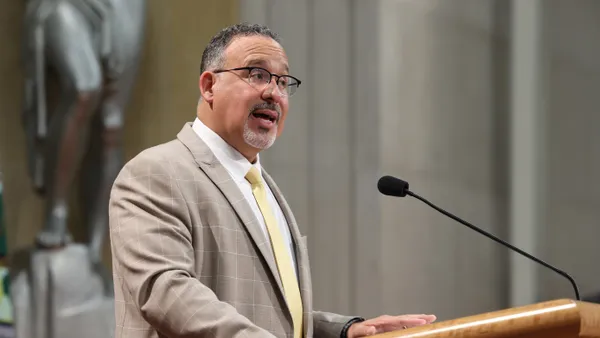Grow-your-own approaches are an increasingly popular teacher pipeline strategy as education leaders work to solve the puzzle of how to address teacher shortages.
These programs vary by district and state, but often provide high school juniors and seniors with dual enrollment opportunities to start gaining college credit toward a teaching degree. The programs then may further financially support those students when they enter colleges of education.
In addition, grow-your-own programs can financially support community members or school paraprofessionals to advance to a teaching certification, particularly in high-need areas like special education and English language learning.
Tennessee is becoming a model for grow-your-own, with its education department announcing in January it will be the first state to sponsor a teaching apprenticeship program approved by the U.S. Department of Labor.
There are currently 65 grow-your-own programs among 14 colleges of education and 63 of Tennessee's 147 school districts, according to the state education department. The programs offer no-cost pathways into the teaching profession through financial assistance for tuition, books and fees, along with establishing residencies for candidates to work alongside current teachers.
U.S. Education Secretary Miguel Cardona visited Tennessee State University Feb. 22 to praise the historically Black institution's grow-your-own teacher pipeline program, The Associated Press reported. Tennessee State has created a pathway for high school seniors to earn a bachelor's degree in teaching with initial licensure in biology, chemistry, special education or English as a second language.
The state education department funded the Tennessee State program through a grow-your-own competitive grant program. In October 2020, the department announced it would award $2 million to seven education prep programs to form or expand teacher pipeline partnerships with districts.
The federal Labor Department's support for Tennessee teaching apprenticeships is significant, because "it opens up a pocket of money that wasn't available to programs in the past," said Jacqueline Rodriguez, vice president of research, policy and advocacy at the American Association of Colleges for Teacher Education, which endorsed the state's application to DOL.
The West Virginia Department of Education is also planning to launch a grow-your-own teacher program this fall, WTRF reported. That state's program aims to help high school students earn at least 22 college credit hours by completing four courses alongside K-12 classroom experience.
Diversifying the teacher workforce
While grow-your-own programs have existed in smaller communities, they have become more widespread in larger areas within the past five years, Rodriguez said.
These programs can help create a more diverse workforce as they help teaching candidates afford their degree, Rodriguez said. Many grow-your-own programs make it a priority to recruit candidates of color, understanding that they can have a noticeable academic impact on all students — and particularly on students of color, she said.
"It's a beautiful way to allow candidates ample opportunity to not only grow in the profession but to grow within a community and to want to stay in that community," Rodriguez said.
Grow-your-own programs can help develop a pipeline of teachers who look like their community and are eager to become educators, said Joshua Starr, chief executive officer of PDK International and a former school superintendent. PDK operates Educators Rising, a nationwide career and technical student organization that provides programming and curriculum for grow-your-own programs.
"Fortunately, more and more folks are starting to recognize, realize that we need to have teachers to reflect the demographics of their community," Starr said. "We know from the research that when students of color have more educators that look like them, they tend to do better."
In fact, matching students' race with that of their teachers can decrease their likelihood of facing exclusionary discipline, particularly for Black and Latinx students in large, diverse and urban school districts, according to a study by the Annenberg Institute at Brown University analyzing a decade of New York City data from 2007 to 2017.
National data isn't yet available on the overall success of grow-your-own programs since the trend is still fairly new, according to Starr. Another reason tangible data is lacking is because it can be difficult to track students once they graduate high school, he said.
Are students interested in teaching?
Introducing students at a young age to the idea of a teaching career through programs like grow-your-own will hopefully encourage them to in fact become educators, Starr said.
But there's a concerning shift in public sentiment toward educators caused by COVID-19 disruptions, just as ed prep programs have seen a decline in enrollment, Rodriguez said. An October Ipsos survey found American public trust in teachers declined by 6 percentage points between 2019 and 2021.
Rodriguez said she's heard from students who don't want to enter the profession because of growing censorship laws targeting educators. At least nine states have passed laws prohibiting teachers from discussing divisive concepts that some parents and legislators fear are present in the classroom, though educators contend are not.
Teacher candidates "these days are watching the media, and they're watching the public sentiment, and they're noting the devaluation of the profession," Rodriguez said. "They're taking note of the censorship teachers are facing across the country with legislation that bans them from actually teaching the historic truth about either American history or current events."
For instance, newly inaugurated Virginia Gov. Glenn Youngkin on Jan. 15 signed an executive order to end critical race theory discussions in K-12 schools.
"Inherently divisive concepts, like Critical Race Theory and its progeny, instruct students to only view life through the lens of race and presumes that some students are consciously or unconsciously racist, sexist, or oppressive, and that other students are victims," Youngkin's executive order said.
But according to a recent University of California, Los Angeles study tracking anti-CRT campaigns' impact on K-12, CRT is a university-level theory stemming from legal studies and used in education research, and is not taught in K-12 classrooms.
If ed prep programs want to create a workforce of teachers that mirrors the diversity of their communities, Rodriguez asked, "How do we encourage future candidates of color to walk into a school system where they already feel silenced?"
Financial barriers from college tuition and low teacher pay are also preventing teacher candidates of color from entering the field, Rodriguez said.
While national conversations surrounding the teacher shortage typically cite a lack of interest among young people for becoming teachers, Starr said there are still students out there who might go into teaching if an adult they respect asked them to consider it.
In general, many students want to serve their communities — they just need to be asked, he said.
"Kids want to serve. They want to help. They want to be a part of something. They're mission-driven," Starr said. "What we find is that when you just kind of ask them, they'll oftentimes come to the table."
Have a grow-your-own champion
For districts looking to start a grow-your-own program, it's important to partner with a local college of education to establish a model that speaks to the community's needs, Rodriguez said.
Getting state agencies involved with a local district and higher education partnership through funding and policy supports will also help the grow-your-own model to address student needs.
"That relationship and that level of communication, and the level of true relationship building cannot be understated," Rodriguez said.
If state leaders are deliberate about involving community stakeholders like higher education leaders, union leaders, district leaders and nonprofits when developing grow-your-own programs, "you can get a lot of stuff done," Starr said.
Overall, good leaders work with their local colleges, they create career pathway programs, and they talk with their state departments about breaking down barriers and creating incentives for training teachers, Starr said.
But it can be hard to launch a grow-your-own program initially, so it's important to have a champion, he said.
"You need someone who is focused on this full time, who has some authority, who can bring people around the table," Starr said. "Sometimes, states and districts don't dedicate the resources to that. It just becomes one more thing that someone else has to do."



